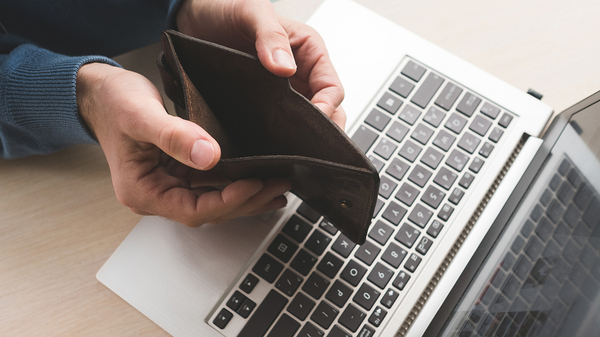Can you imagine how you would feel if you somehow lost access to the bitcoin stored in your wallet? It’s not as unusual as you might think. In November 2017, Fortune reported on research from the digital forensics analysis firm Chainalysis that suggests as much as 3.78 million, or 23 percent, of all existing bitcoin are already lost.

The Best Defense Is a Good Offense
There are some best practices you can follow to secure your bitcoin:
- Always backup your wallet.
- Encrypt your wallet with a strong password.
- Store wallet backups in multiple locations (USB drive, CD, paper wallet, private cloud, etc.).
- Backup regularly when backing up a data file (such as wallet.dat).
Backing up your wallet will secure your bitcoin in the event of a hardware or software failure, or if you have a device with a wallet lost or stolen. This is one step you shouldn’t ever skip.
In general, there are three methods for backing up a bitcoin wallet:
- Wallet.dat file backup
- BIP32 Master Private Key
- BIP39 Mnemonic Seed Phrase
Which method is used depends on the wallet being used. Many, if not most, of the current wallets use the BIP39 mnemonic seed phrase method.
Restoring a Hardware Wallet
Both the Trezor and Ledger hardware wallets will generate a mnemonic seed phrase as a backup and recovery when you first set them up. These phrases can consist of 12, 18, or 24 randomly generated words. They should be written down and should never be stored on any internet-connected device. (This Trezor blog highlights important tips for keeping your recovery seed secure.)
Once you write the seed phrase down, you can use the seeds to restore your wallet on a new device if the old one is lost, stolen, or destroyed. You simply find the “new wallet/restore wallet” feature and, when prompted, type in your mnemonic seed.
The mnemonic seeds created by the Trezor and Ledger areBIP39 and the phrases can actually be used with any BIP39-compatible wallet to restore lost bitcoin.
Restoring Bitcoin Core
You may be using Bitcoin Core as your wallet, which is admirable as it also helps to secure the network. Bitcoin Core uses a file called wallet.dat for storing the private keys (and other data) that match the bitcoin stored in the wallet.
You can find wallet.dat at the following locations depending on your operating system:
- Windows: %APPDATA%\Bitcoin
- Linux: ~/.bitcoin/
- Mac OS X: ~/Library/Application Support/Bitcoin/

Once you locate the file, it is easy enough to back up. Simply copy it to another device such as a USB drive, external hard drive, a CD, another computer, or a private cloud storage location. It is never recommended to use online cloud storage, even if you encrypt the file.
To restore the wallet, you copy the backup over an existing wallet.dat file in the Bitcoin Core installation. Please note that this will wipe any data on the wallet.dat you are overwriting. Bitcoin Core can only use one version of wallet.dat at a time.
The Takeaway
As you can see, backing up your wallet is critical in the event there is some failure in hardware or software, or you simply lose the wallet somehow. Once you have a backup, you have peace of mind. Restoring a bitcoin wallet from a backup is as easy as typing a series of words, or copy/pasting a file.
Don’t risk your bitcoin. Always backup your wallet so it can be restored later.
Want to learn how to invest those bitcoin you have secured wisely? Subscribe to the Bitcoin Market Journal newsletter today and join a vibrant community of like-minded blockchain and bitcoin investors!

